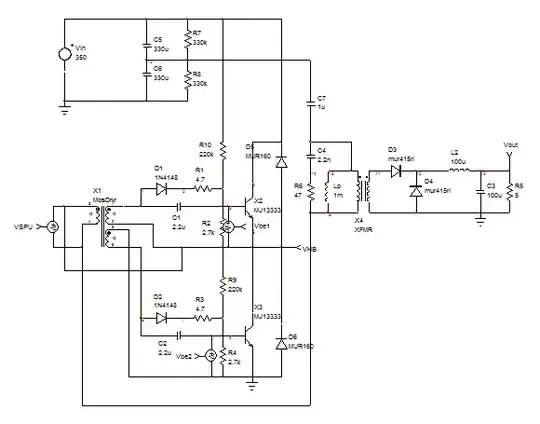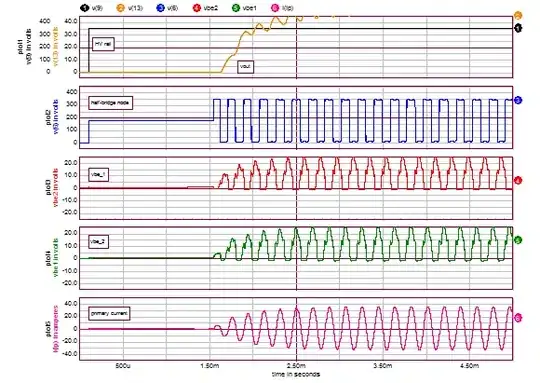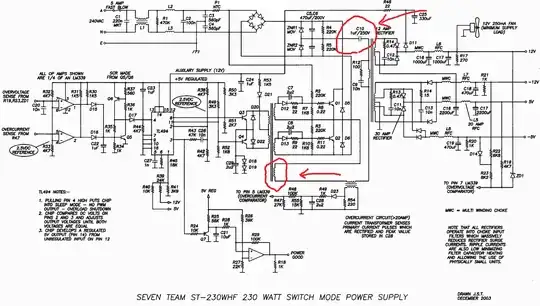The below circuit shows a quick simulation file concentrating on the power section only. The thing is to crank the power supply by forcing a self-relaxing activity through the extra winding you mention. An initial start-up current is given by \$R_2\$ which biases \$Q_1\$ at power-up. Given the presence of the speed-up winding and its polarity, this strengthens the biasing of \$Q_1\$ until its collector current no longer rises given the available base current. As \$\frac{d\phi}{dt}=0\$ in the transformer, the transistor blocks because the extra bias disappears. The polarity reverses on the speed-up winding, effectively blocking \$Q_1\$ and now biasing \$Q_2\$ until a new cycle repeats. Then I believe the TL494 will soon drive operations once the auxiliary supply is alive. The start-up sequence seems to be at low frequency and nicely oscillating considering the arbitrary values I put there. It should be enough to understand the role of this extra winding which blindly (there is no over current protection or over voltage protection in the sec. side either) ensures a self-relaxing start-up until the TL494 takes over. I have looked at the Czech site in which the owner gathered a lot of power supply schematics (nice collection!) and it was the way cheap ATX power supplies were designed a while ago. I however do not see the need for a self-relaxing circuit like this one when a 5-V USB auxiliary power supply is present in the silver box as this power supply starts first and then provides a \$V_{cc}\$to the control circuit. Nowadays, most ATX boxes uses a 2-SW forward converter with MOSFETs and a dedicated control section powered from a standby power supply.




